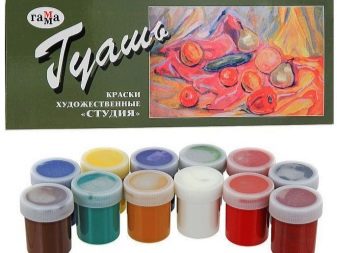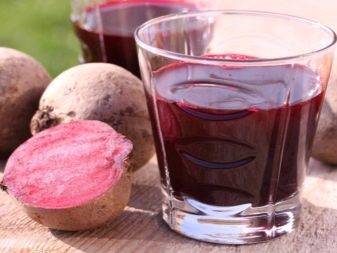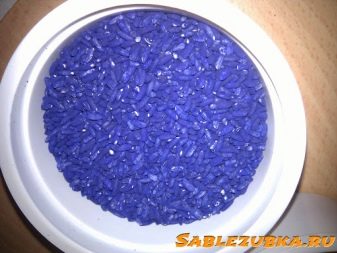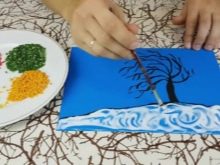Making rice crafts

Rice is an excellent material for a variety of handicrafts: it is inexpensive, it is almost always at hand, it can be painted and glued without any problems, either on glue, or on scotch tape or plasticine. Moreover, interaction with rice has a beneficial effect on the development of the child.



How and with what can you paint rice for crafts?
There are several ways to get colored rice for creativity.
- Gouache or children's finger paints are suitable for work. It is better to take gouache based on natural ingredients or containing natural pigments.
- It will also be possible to use the banal brilliant green.
- The desired result can be achieved with food colors.
- Finally, you can use natural colors such as spinach and beet juice, saffron and turmeric.




In all of the above cases, at the mixing stage, it will be possible to add a few drops of essential oil and get a pleasant smell.
When dyeing rice with gouache, the groats are crumbled into several unnecessary containers, after which a thick solution of dye and a small amount of water are added to each one, which makes it possible to obtain a mushy substance. The contents of the bowl or glass are thoroughly mixed and left in this state for about half an hour.
Excess moisture that will not be absorbed by the rice will have to be drained, and the rice itself should be poured onto white paper and allowed to dry for 24 hours. Whether the material is ready for use can be determined by picking it up: if the cereal does not stain the skin, then you can proceed to creating crafts. It is more convenient to store colored rice in glass jars.


Working with brilliant green is relatively easier. A couple of drops of the solution are added to a plastic bag with rice, which is then closed with a zipper and shaken well. After mixing the components, the cereals should be laid out on white paper and left to dry. After 15 minutes, the material will be ready for use, and even its unpleasant odor will disappear without a trace. Nevertheless, it should be remembered that brilliant green is highly sensitive to light, and therefore bright grains will fade over time.
Working with food colors begins with the fact that half a glass of cereal is laid out in a plastic container. A few drops of dye are sent there, as well as half a tablespoon of vinegar. If only dry dye is available, it will first have to be diluted in a few drops of water. The box is closed with a lid and the contents are shaken until smooth. Then the rice is laid out on paper or cling film, and then dried naturally. You can also put them in the oven and heat them for 45 minutes at 170 degrees. The rich bright color of such cereals will persist for a long time.


It should be mentioned that for crafts it is better to use long white rice, which is distinguished by its hardness and strength.
In the absence of extra time, it can be mixed in a cloth or gauze with dry dye, and then dipped in boiling water for a few seconds. When the grains have cooled, you will need to rub them a little with your fingers. Another unusual coloring method requires combining a teaspoon of ethyl alcohol and a large amount of food coloring. About 3/4 cup of rice is poured into the resulting mixture, and everything is well mixed. At the end, the cereal is left to dry on the foil.


How to make an applique on the theme "Autumn"?
It will be very interesting for children to create a work called "Autumn Wind" with their own hands. For work, in addition to rice, you will need thick colored cardboard, gouache, PVA glue, a brush and several small containers, for example, glasses. First of all, the cereal is crumbled into cups. Their number is determined depending on how many colors of rice should be obtained. For autumn work, you will need at least yellow, green, red and orange shades.
Gouache of the desired color and a small amount of water are added to each container. Its contents are mixed until uniform in color and laid out to dry.



At this time, a horizon line and a simple tree with branches are drawn on a sheet of colored cardboard in black gouache. The entire area under the horizon is evenly coated with glue and filled with colored rice: for example, it can be green grass, sprinkled with colorful leaves on top. At the end of the stage, the rump will need to be lightly pressed against the paper for better fixation.
The processing of tree crowns is carried out in the same way. First, the space around the branches is coated with glue, and then carefully covered with a mixture of the remaining rice. After the formation of a crown with a thin object, the grains will need to be slightly moved apart to make the branches visible. A few drops of glue are applied to the side of the tree on the cardboard, on which rice is planted afterwards.
You should get the impression that the leaves are blowing off the tree.






How to make mushrooms?
By combining rice with buckwheat, it will be possible to make a rather simple application on the "Mushroom" theme. The creative process will be carried out using not only cereals, but also a sheet of thick cardboard, plasticine, corresponding to the shade of cardboard or the shade of cereals, felt-tip pens or paints. Following the instructions step by step, you need to start by drawing the outline of the mushroom on the sheet. Further, the entire internal space is filled with plasticine.
If an ordinary mushroom is created, then its cap is made out with buckwheat, and the leg - with long-grain rice.At the magic plant, you can swap the buckwheat with rice, and the latter can also be tinted with a bright dye. The grains should be fastened carefully with slight pressure.
Felt-tip pens and paint will help you decorate the background, making the applique complete.






Sensor boxes
Colored rice is ideal for organizing sensory boxes - educational toys that allow toddlers to expand their tactile experience and develop fine motor skills. One or more types of cereals are usually poured into a box, as well as small figures, pebbles, shells and other little things that can be touched, buried, dug up and examined... It is more interesting to make sensory boxes for both an adult and a child thematic. For example, together with blue rice in a transparent box, fish made of polymer clay, plastic submarines and pebbles can be accommodated - this is how a sea development will turn out. In the same container, you can build a small hill of real sand and add a variety of shells.
An Insect-themed box will contain green-tinted groats, a set of rubber bugs, real twigs and a few leaves cut out of felt. After giving the rice a pink hue, it will be possible to add decorative elements for Easter, figurines of bunnies and chickens, plastic eggs, large beads and curly buttons to the Easter box.



Crafts for decor
Decorated bottles filled with rice, buckwheat, lentils, beans and other cereals are often used to decorate the kitchen. Rice can be previously repainted in a suitable shade. A beautiful container - a bottle of an unusual shape or a jar - is filled with different layers almost to the very top. The neck is tied with a burlap rag and a piece of twine or braid.
The groats are also suitable for decorating a photo frame, and for creating an unusual candlestick from a filled glass jar.

More ideas
In general, with the help of colored rice, it turns out to arrange any image you like. In this case, a drawing with large elements is drawn on a white sheet of paper or cardboard, and then its individual areas are alternately coated with a thick layer of glue and completely filled with grains of different shades. By the way, instead of glue, it is not forbidden to use double-sided tape.
You can glue cereals and only in some places of colored cardboard. For example, in this way it is possible to get a dressing for a donut or ice cream cone.


Crafts, which are pictures made of cereals on a plasticine basis, look very original. You can also use environmentally friendly material for decorating a Christmas tree toy. To work in this case, you will need acrylic varnish, buckwheat with rice, a brush with PVA glue, ribbons, a disposable plate and plastic balls.
The mixture of cereals is poured into a container, and the toy is covered with a thick layer of glue. The ball falls in grains until there are no gaps. The excess is carefully shaken off, and the toy is left to dry for about a day. At the end, the ball is covered with acrylic varnish and hung on the tree with a ribbon.


Similarly, you can decorate eggs for Easter. Each is covered with glue with a brush and poured out into a mixture of several cereals. You can immediately completely cover the surface, or fill only the image previously applied with a felt-tip pen with rice, and fill the rest of the space with semolina. In another case, part of the egg is pasted over with cereals, and on the other, a funny muzzle is drawn.

For information on how to make rice crafts, see the next video.








